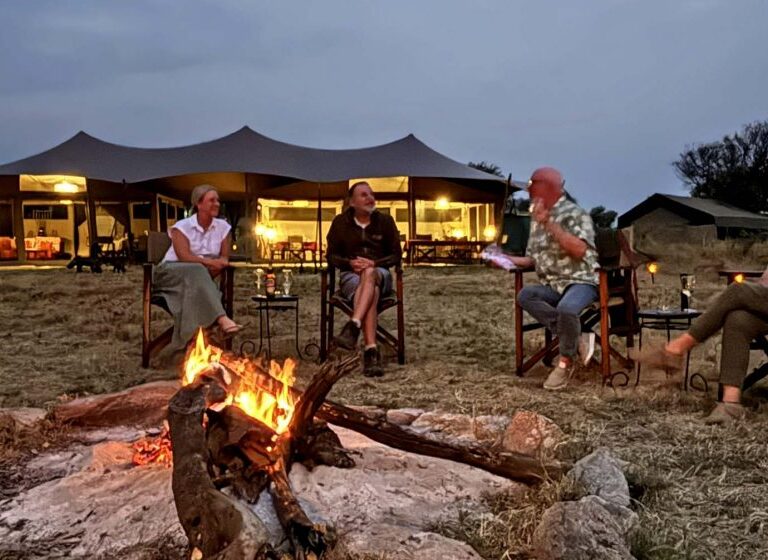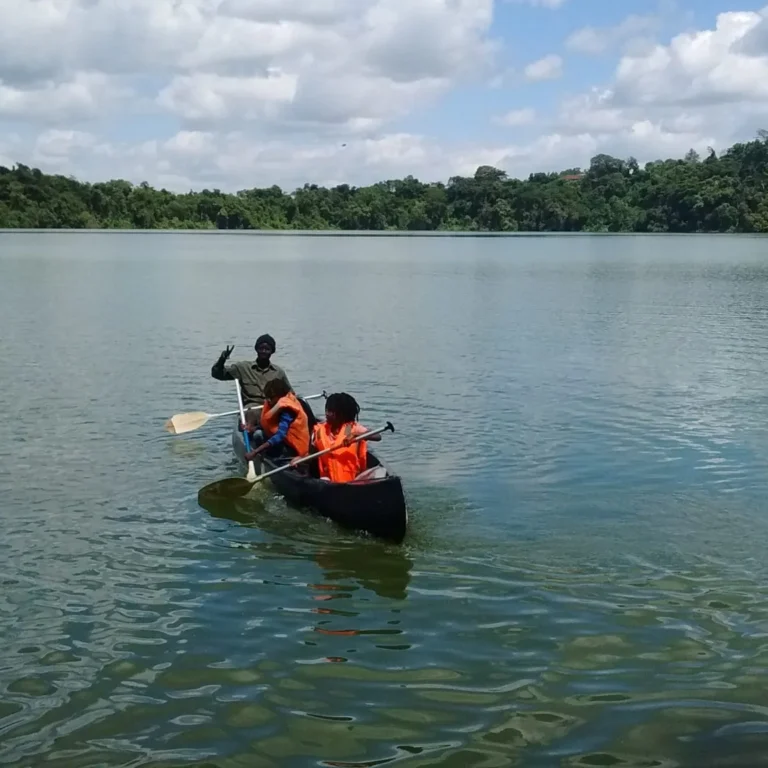What are the Most Dangerous Animals in Africa?
Africa, a continent known for its vast landscapes and diverse wildlife, is home to some of the world’s most dangerous animals. These creatures, while awe-inspiring, pose significant threats to humans and other animals alike. In this article, we will explore the most dangerous animals in Africa. Delving into their behaviors, habitats, and the reasons they are considered perilous.
1. The African Elephant
The African elephant is the largest land animal on Earth, known for its impressive size and strength. Despite their generally gentle nature, these giants can be extremely dangerous when threatened or provoked. Elephants can weigh up to 14,000 pounds and can charge at speeds of up to 25 miles per hour.
Behavior and Habitat
African elephants are found in diverse habitats, from savannas and forests to deserts. They are highly social animals, living in herds led by a matriarch. When their territory is encroached upon or they feel threatened, elephants can become highly aggressive. Using their massive tusks and trunks as weapons.
Why They Are Dangerous
Their size alone makes them dangerous, but their ability to charge and trample threats adds to the risk. Every year, elephants are responsible for numerous human fatalities, primarily in areas where human-elephant conflicts occur due to habitat encroachment.
2. The Nile Crocodile
The Nile crocodile is one of Africa’s most fearsome predators. These reptiles are known for their incredible strength, powerful jaws, and stealthy hunting tactics.
Behavior and Habitat
Nile crocodiles inhabit freshwater bodies such as rivers, lakes, and marshlands across sub-Saharan Africa. They are opportunistic hunters, lying in wait for unsuspecting prey to come close to the water’s edge before launching a swift and deadly attack.
Why They Are Dangerous
Nile crocodiles are responsible for more human deaths in Africa than any other predator. Their ambush tactics, combined with their powerful bite, make them deadly. They can take down large prey, including humans, and their territorial nature means they will aggressively defend their habitat.
3. The Hippopotamus
Despite their seemingly docile appearance. Hippopotamuses are incredibly dangerous and are often considered one of the most aggressive animals in Africa.
Behavior and Habitat
Hippos spend much of their time in water bodies such as rivers and lakes, emerging at night to graze on grasses. They are highly territorial in water and can be extremely aggressive if they feel threatened.
Why They Are Dangerous
Hippos are responsible for more human fatalities in Africa than lions. Their large size, sharp teeth, and aggressive nature, particularly when protecting their young or territory, make them a significant threat. They can run surprisingly fast on land, further adding to the danger they pose.
4. The Lion
The lion, often called the “King of the Jungle,” is one of Africa’s most iconic and feared predators. Known for their strength, speed, and teamwork, lions are formidable hunters.
Behavior and Habitat
Lions are social animals, living in prides that typically consist of several females, their cubs, and a few males. They inhabit savannas, grasslands, and open woodlands. Lions are apex predators and primarily hunt large herbivores such as zebras and wildebeests.
Why They Are Dangerous
Lions pose a danger to humans primarily in areas where human activities overlap with their habitats. They are powerful and skilled hunters, capable of taking down large prey with coordinated attacks. Occasionally, lions become man-eaters, targeting humans, especially in areas with scarce natural prey.
5. The Black Mamba
The black mamba is one of Africa’s most feared snakes, known for its speed, potent venom, and aggressive nature.
Behavior and Habitat
Black mambas inhabit savannas, rocky hills, and open woodlands. They are highly territorial and will aggressively defend themselves when threatened. They can reach speeds of up to 12 miles per hour, making them the fastest snake in the world.
Why They Are Dangerous
The black mamba’s venom is highly toxic, capable of killing a human within hours if not treated promptly. They deliver multiple bites when attacking, injecting large amounts of venom. Encounters with black mambas often occur in rural areas where they enter homes or are inadvertently provoked.
6. The Cape Buffalo
Often referred to as the African buffalo, the Cape buffalo is one of the most dangerous animals on the continent. These large, powerful animals are known for their unpredictable nature and aggressive behavior.
Behavior and Habitat
Cape buffaloes are found in various habitats, including savannas, swamps, and forests. They live in large herds, which provides protection against predators. When threatened, they can be extremely aggressive, especially if they feel cornered or are protecting their young.
Why They Are Dangerous
Cape buffaloes are responsible for numerous human deaths each year. Their large horns and powerful bodies make them capable of inflicting serious injuries. They are known to charge without warning, and their unpredictable nature adds to the danger they pose.
7. The Great White Shark
The great white shark is one of the most feared marine predators, known for its size, power, and predatory prowess.
Behavior and Habitat
Great white sharks inhabit coastal waters around Africa, particularly off the coast of South Africa. They are solitary hunters, primarily preying on seals, sea lions, and other marine animals. Great whites are known for their powerful jaws and sharp teeth. Which they use to capture and kill their prey.
Why They Are Dangerous
While shark attacks on humans are rare, great white sharks are responsible for the majority of unprovoked attacks. Their immense size, strength, and speed make them capable of causing fatal injuries. Most attacks occur when sharks mistake humans for their natural prey.
8. The African Rock Python
The African rock python is one of the largest snake species in the world and one of Africa’s most dangerous reptiles.
Behavior and Habitat
African rock pythons are found in a variety of habitats. Including forests, savannas, and near water bodies. They are ambush predators, relying on their camouflage to catch unsuspecting prey. They constrict their prey, suffocating it before swallowing it whole.
Why They Are Dangerous
While not venomous, African rock pythons pose a danger due to their size and strength. They can constrict and kill large animals, including humans. Encounters with humans often occur when these snakes venture into populated areas in search of food.
9. The Mosquito
The mosquito is often overlooked due to its small size. But it is, in fact, the deadliest animal in Africa, responsible for approximately 1,000,000 human deaths per year. The primary danger posed by mosquitoes is their ability to transmit deadly diseases.
Behavior and Habitat
Mosquitoes are found in various environments across Africa. Including tropical and subtropical regions. They breed in stagnant water and are most active during dawn and dusk. Female mosquitoes feed on blood, which they need to develop their eggs.
Why They Are Dangerous
Mosquitoes are vectors for several deadly diseases, including malaria, dengue fever, Zika virus, and yellow fever. Malaria, in particular, is a significant threat in Africa, causing hundreds of thousands of deaths annually. The ease with which mosquitoes can transmit these diseases makes them a formidable and deadly presence.
10. The Spotted Hyena
The spotted hyena is a formidable predator and scavenger, known for its powerful jaws and complex social structure.
Behavior and Habitat
Spotted hyenas are found across sub-Saharan Africa in various habitats. Including savannas, grasslands, and forests. They live in large social groups called clans, led by a dominant female both skilled hunters and scavengers. Often relying on their strength. and numbers to overpower prey or steal kills from other predators.
Why They Are Dangerous
Spotted hyenas are known for their aggressive nature. Formidable bite capable of crushing bones. While attacks on humans are relatively rare, they do occur, particularly in areas where hyena habitats overlap with human settlements. Hyenas can be particularly dangerous at night, when they become more active and may venture into populated areas in search of food.
11. The Leopard
The leopard is one of Africa’s most elusive and dangerous predators, known for its strength, agility, and stealth.
Behavior and Habitat
Leopards inhabit a wide range of environments, including savannas, forests, mountains, and even urban areas. They are solitary animals, marking and defending their territories from intruders. Haul their prey into trees to avoid scavengers.
Why They Are Dangerous
Leopards are responsible for about 26 attacks on humans per year. Their stealth and power make them formidable hunters, capable of taking down prey much larger than themselves. When leopards feel threatened or are unable to find their usual prey, they may turn to livestock or even humans, particularly in areas where their natural habitat is shrinking due to human encroachment.
12. The Rhinoceros
Rhinoceroses, with their massive size and thick skin, are among the most dangerous animals in Africa. Both black and white rhinos can pose significant threats to humans.
Behavior and Habitat
Rhinos typically found in grasslands, savannas, and tropical bushlands. They are generally solitary animals, with the exception of females and their young. Rhinos have poor eyesight but an excellent sense of smell and hearing, which they rely on to detect threats.
Why They Are Dangerous
Rhinos can be extremely aggressive when they feel threatened. Known to charge at perceived threats with incredible speed. Using their powerful horns as weapons. The sheer size and strength of a rhino make it a formidable opponent, and human fatalities have occurred when people inadvertently come too close to these animals.
13. The Hippopotamus
Despite their seemingly docile appearance hippopotamuses incredibly dangerous considered one of the most aggressive animals in Africa.
Behavior and Habitat
Hippos spend much of their time in water bodies such as rivers and lakes, emerging at night to graze on grasses. They are highly territorial in water and can be extremely aggressive if they feel threatened.
Why They Are Dangerous
Hippos are responsible for more human fatalities in Africa than most other large animals. Their large size, sharp teeth, and aggressive nature, particularly when protecting their young or territory, make them a significant threat. Hippos can run surprisingly fast on land, further adding to the danger they pose. Their unpredictable and territorial behavior in water makes encounters particularly hazardous.
Conclusion: Most Dangerous Animals on an African Safari
Africa’s diverse wildlife includes some of the most dangerous animals on the planet. From the sheer power of the African elephant to the stealthy tactics of the Nile crocodile and the aggressive nature of the hippo, these animals command respect and caution. Understanding their behaviors and habitats can help mitigate the risks they pose, ensuring that humans and wildlife can coexist safely.








